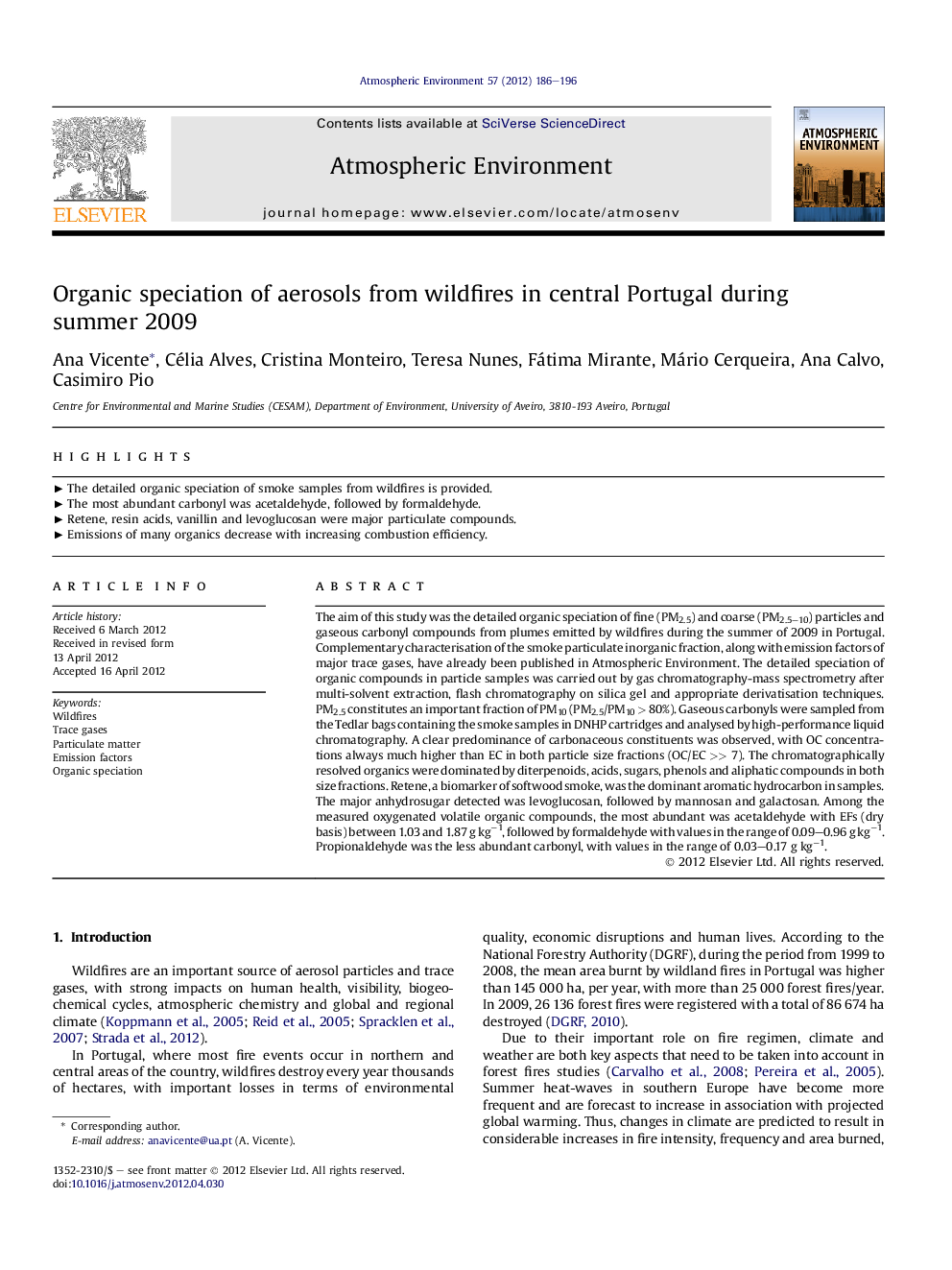| کد مقاله | کد نشریه | سال انتشار | مقاله انگلیسی | نسخه تمام متن |
|---|---|---|---|---|
| 4438892 | 1620414 | 2012 | 11 صفحه PDF | دانلود رایگان |

The aim of this study was the detailed organic speciation of fine (PM2.5) and coarse (PM2.5–10) particles and gaseous carbonyl compounds from plumes emitted by wildfires during the summer of 2009 in Portugal. Complementary characterisation of the smoke particulate inorganic fraction, along with emission factors of major trace gases, have already been published in Atmospheric Environment. The detailed speciation of organic compounds in particle samples was carried out by gas chromatography-mass spectrometry after multi-solvent extraction, flash chromatography on silica gel and appropriate derivatisation techniques. PM2.5 constitutes an important fraction of PM10 (PM2.5/PM10 > 80%). Gaseous carbonyls were sampled from the Tedlar bags containing the smoke samples in DNHP cartridges and analysed by high-performance liquid chromatography. A clear predominance of carbonaceous constituents was observed, with OC concentrations always much higher than EC in both particle size fractions (OC/EC >> 7). The chromatographically resolved organics were dominated by diterpenoids, acids, sugars, phenols and aliphatic compounds in both size fractions. Retene, a biomarker of softwood smoke, was the dominant aromatic hydrocarbon in samples. The major anhydrosugar detected was levoglucosan, followed by mannosan and galactosan. Among the measured oxygenated volatile organic compounds, the most abundant was acetaldehyde with EFs (dry basis) between 1.03 and 1.87 g kg−1, followed by formaldehyde with values in the range of 0.09–0.96 g kg−1. Propionaldehyde was the less abundant carbonyl, with values in the range of 0.03–0.17 g kg−1.
► The detailed organic speciation of smoke samples from wildfires is provided.
► The most abundant carbonyl was acetaldehyde, followed by formaldehyde.
► Retene, resin acids, vanillin and levoglucosan were major particulate compounds.
► Emissions of many organics decrease with increasing combustion efficiency.
Journal: Atmospheric Environment - Volume 57, September 2012, Pages 186–196